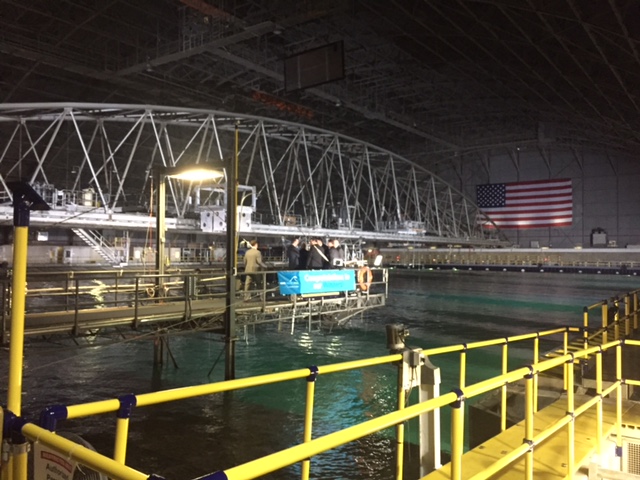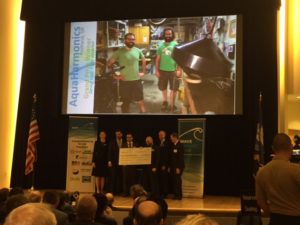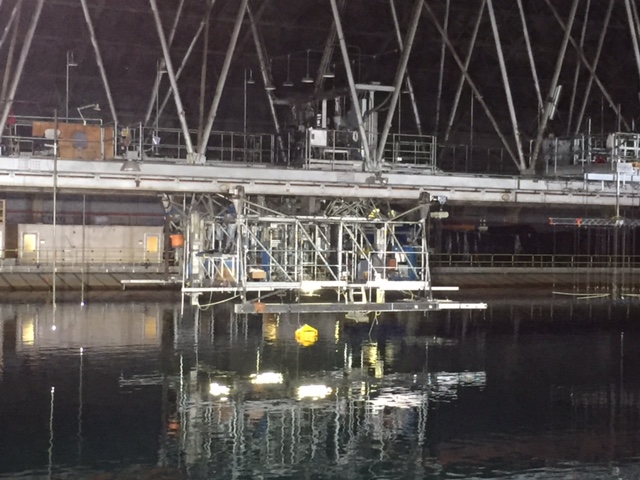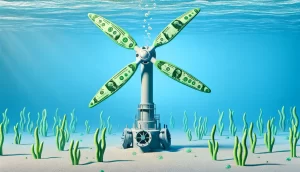The Wave Energy Prize has a winner! I was lucky enough to have attended this event at the Naval Surface Warfare Center in Carderock, MD yesterday where I met with many experts across the industry. Now that there appears to be a clear winner, what’s next for the wave energy industry?

The Wave Energy Prize is a competition in which 92 teams submitted designs vying for cash prizes. It’s the first of its kind hosted by the Department of Energy’s Wind and Water Power Program and has been four years in the making. Over the past 18 months the number of contestants was whittled down to nine finalists as teams were forced to meet design gates and other milestones.
Success for the teams is measured using a DoE created metric called the Average Climate Capture Width per Characteristic Capital Expenditure (ACE); described by one of the organizers as “perhaps the world’s most complicated metric.” I’d have to agree. The DoE has benchmarked existing wave energy converter (WEC) devices at an ACE of 1.5 meters per million dollars. To qualify for the final round of testing the team’s devices had to beat that by a factor of two at a minimum, or 3 m/$M.

AquaHarmonics went home with the grand prize of $1.5 million after presenting a device with an ACE of 7.4 m/$M; almost two and half times the threshold requirement! CalWave Power Technologies and WaveSwing America came in second and third respectively, with ACES of 6.9 and 4.8 m/$M. A huge congratulations to all the teams for all their hard work over the last couple of years.
In “Why Aren’t There More Marine Renewables on the Grid” I mentioned that one of the issues plaguing the wave power industry is that a single design hasn’t emerged as one the industry can rally behind. The Wave Energy Prize helped change that.
AquaHarmonic’s winning design is analogous to a Yo-Yo. It is a point absorber type, with a single float connected to the seafloor via a mooring cable. Four power lines also run from the float to seafloor providing additional mooring and anti-twisting protection. The interior of the float houses a brushless DC motor connected to a winch.

This winch controls the take-in and pay-out of the mooring line through some fancy control algorithms. When the float rises on the crest of a wave the winch is paying-put line and power is being generated. When the float falls into the trough of the wave the winch is taking-up slack. The algorithms controlling the device are trying to generate resonance (hence the team’s name) by applying a force at just the right moment. This control results in an amplified motion of the device enabling a net production of power.
There are several advantages to this design. It’s a surface device, so it’s relatively easy to get at the internals. It captures energy from heaving and surging conditions and operates across the “full spectrum” according to one of the judges, which is crucial in a confused sea state. Lastly, the ‘stroke’ of the mooring line is relatively unconstrained, so larger waves aren’t a problem.
AquaHarmonics design is simple and elegant. The team claims that it is relatively easy to manufacture and has fewer components than its competitors. It’s also smaller and lighter. All great things for adoptability.
Perhaps this is the design for which the industry has been waiting; only time will tell. One thing is certain however, the Wave Energy Prize gathered some great data on a variety of devices and attracted lots of interest to the field. Chalk this one up as a win, not just for the three winners of the Wave Energy Prize, but for the entire marine renewable energy sector.




